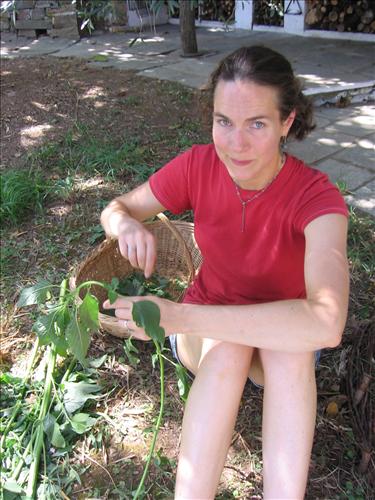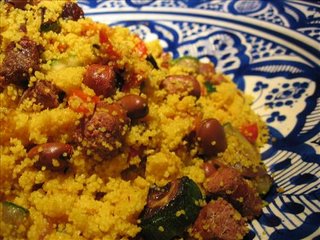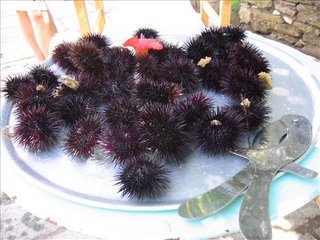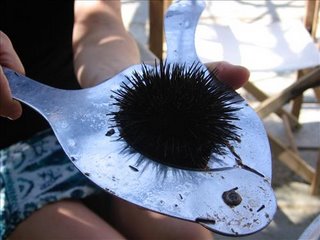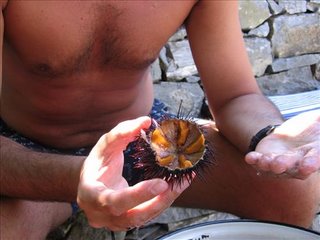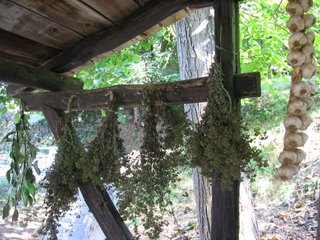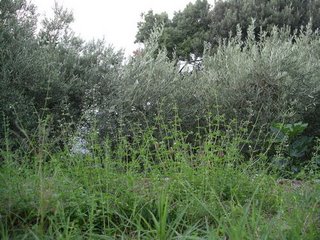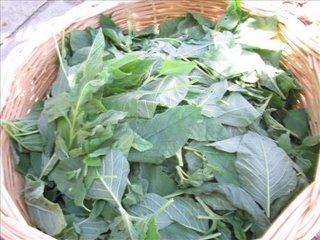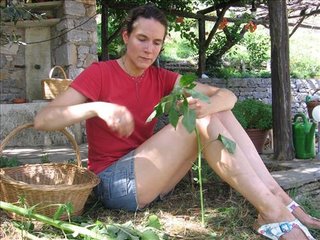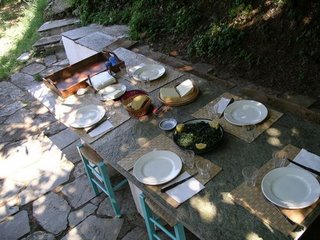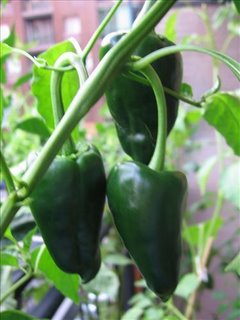
I have a little bit of Mexico growing on my balcony. The herbs, the one cuor di bue tomato plant and the one cavolo lacinato (dinosaur kale) plant take up one corner of my balcony and the rest teems with 4 poblano peppers plants and 4 tomatillo plants each 7 feet high. It's a jungle out there. After
planting the seeds in March, watering religiously, caring for them, squashing
parasites between my fingers, adding my own
back-balcony compost during the growing season, and dreaming up recipe after recipe, the reward has arrived! I've finally taken my first harvest of poblano peppers! They're small but there are dozens and dozens.
Mexican ingredients are about the only thing I haven't been able to find here, in Italy. The Italian food shops plus recent immigrants to Milan from The Middle East, Asia, Africa and South America have seen to it to supply me with almost every food item I could ever dream of (not to mention many things I'd never heard of before, like delicious, "lardo". No, really, it's great!), and it's not so bad to carry the odd bag of dried chiles anchos, guajillos and pasillas, the canned chile chipotle and all the lovely spices on the airplane from Chicago once in a while, but fresh vegetables I have the duty/pleasure to grow myself.
So, today I opened
my favorite Rick Bayless Mexican cookbook looking for poblano recipes to use my first pick and found "Chicken Breasts With Poblanos, Mushrooms and Cream". For just how much I love Rick Bayless,
see here. Then I went and made a few changes. See, Bayless calls for baking chicken breasts. Baking them, which never in my experience turns out what you'd call moist. Maybe he was bowing to the U.S. American penchant for this driest, blandest of all chicken parts? I however, having no culinary empire to protect by writing recipes for the "grande publique", am free to do whatever I please so for me it was baked, bone-in, skin-on chicken legs and thighs (much juicier and so crispy when all you have to do is salt 'em and bake 'em!) So here's my take on Rick Bayless's recipe:

1 lb whole poblano peppers
2 chicken legs and 2 thighs (bone-in, skin-on)
dash of salt
3 cups roughly chopped oyster mushrooms*
1 tbsp vegetable oil
1/4 cup water
dash of salt
1 tbsp vegetable oil
1 large white onion, in a large dice
3 garlic cloves finely chopped
1/2 tsp dried oregano
3/4 tsp dried thyme
6 large minced epazote leaves (I use the dried ones I imported on the last flight back to Italy, but use fresh if you've got a good Mexican grocery nearby)
1 cup heavy cream or Mexican crema
1 tsp salt
First, roast the poblanos whole on the highest rack of a 375F oven until they've blackened in some places and blistered about everywhere. Remove them and place in a paper bag to steam for a minute or 2. In the meantime, prepare 2 ovenproof containers (I used 2 shallow, medium-sized oval dishes), place the chicken pieces in one, salt them. Arrange the mushrooms in the other, drizzle 1 tbsp oil, salt and turn to coat thoroughly. Turn the timer on for 15 minutes, place the chicken in the oven then peel and seed the poblanos while they're still very warm.
Music to peel poblanos by: Tucson, Arizona's own Calexico with "Banderilla" from the release "Even My Sure Things Fall Through" I find poblanos easier to peel than bell peppers. Reserve the peppers.
Next, make the rajas: pour the 1 tbsp oil into a medium frying pan over medium-high heat then add the onions cook for about 5 minutes stirring periodically until they have reached a good, medium brown color. Add the garlic, oregano and thyme, stir and cook another minute then stir in the poblanos and heat through. Whenever the timer rings, put the mushrooms in the oven (on a lower rack if they don't fit on the same one). Do not remove the chicken. Put the timer on for 30 minutes more.
Now make the poblano crema: Scrape the poblano mixture into a food processor or blender and puree while drizzling in the cream or crema. You want the consistency of thick cream soup so add water if the mixture is too thick. Reserve.
When your chicken and mushrooms are done (the chicken should be brown and crispy while the mushrooms should have 1. reduced in volume, 2. gotten rather soft and 3. accompanied by a nice, thickish juice that you may add to the poblano crema.
Finally, pour about 1/2 cup of sauce on each plate, put one piece of chicken on top and accompany with the mushrooms on the side. You may have extra sauce. Enjoy with fresh hot tortillas or some boiled potatoes, which will soak up your extra sauce nicely!
*Oyster mushrooms are so pretty and sooo good and at 4 euros a kilo at the grocery store...I LOVE ITALY!! Here, good food for cheap is a birthright. For my diatribe about that,
see here.
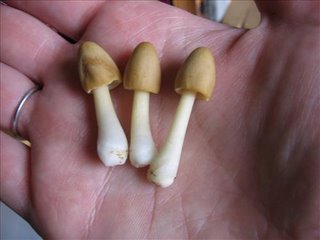 After coming home from a future job reconnaissance mission at the Politecnico in Como (yeah, that's "Lake Como"; I'm planning on sipping Martini with George after each class), I found these tiny little mushrooms growing in the soil of my Cavolo lacinato (dinosaur kale) pot. They seem so innocuous, almost vulnerable that something is pushing me to taste them. About 5 years ago I bought a field guide to North American mushrooms that was meant to help me forage for morels and puffballs in the forests of Minnesota. Never did I have the nerve to take anything home to the sautee pan, not even one specimen that really looked like a porcini. So I'm now regretting my caution, scared I'm getting a little boring. Not to mention my great track-record with dangerous foods leads me to feelings of invincibility. I can take on 3 measly little mushrooms. Right?
After coming home from a future job reconnaissance mission at the Politecnico in Como (yeah, that's "Lake Como"; I'm planning on sipping Martini with George after each class), I found these tiny little mushrooms growing in the soil of my Cavolo lacinato (dinosaur kale) pot. They seem so innocuous, almost vulnerable that something is pushing me to taste them. About 5 years ago I bought a field guide to North American mushrooms that was meant to help me forage for morels and puffballs in the forests of Minnesota. Never did I have the nerve to take anything home to the sautee pan, not even one specimen that really looked like a porcini. So I'm now regretting my caution, scared I'm getting a little boring. Not to mention my great track-record with dangerous foods leads me to feelings of invincibility. I can take on 3 measly little mushrooms. Right? 